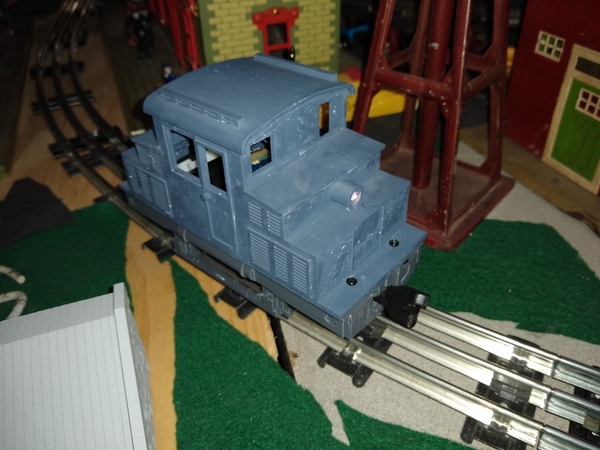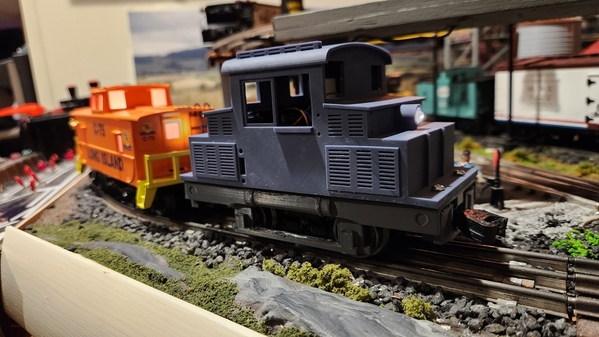Last week @Trainguy Ken posted this cool build he did with an old powered hand car chassis and a 3D printed body. The Pennsy Street Tractor was born.
I had commented on Ken's thread and followed it up with an email about another little critter that would be fun to build. Being a host/ regular on Switcher Saturday made this a natural fit. I never thought I'd be seeing it in reality but here we go.....
Ken and I have been trading emails for the past few days with ideas for my engine. We talked about the ideal chassis to use, the K-line Plymouth was an obvious choice. But Ken suggested a Lionel LionChief chassis from a few of their small RTR sets, in particular, the Dinosaur Freight Set. The biggest advantage being that it has LC control and sound.
Ken went to work based only on some old photos I had sent him from Trains Are Fun LIRR web site. The engine we have been developing (I'm merely a spectator here), was a small electric switcher that the LIRR used at the Morris Park Engine Shops, in Queens, NY. The details that he added are amazing.
The A1 #320 was built by Baldwin Locomotive Works, and powered by Westinghouse (all electric). It was used to move equipment around the shops, on and off the turntable and transfer table, and in and out of various service bays. The A1 was built in 1927 and was in service well into the 1950's. Here's the prototype.
After a few prototype prints, Ken came back to me with the finished product. I can't thank Ken enough for taking the time to develop this for me. I had thought about modifying a small engine, like an old Army Switcher to create this critter but after seeing what he can do with resin, there's no going back to cutting and shaping styrene.
So the body is on it's way to me, less the chassis which I've sourced from the Bay. I'll handle final assembly and wiring, and will post progress pix as I go. I'll add details like foot boards, hand rails and coupler releases with brass. Painting will likely wait until the Spring but a few warm January days might help the process along.
Gotta love this Forum!
Bob
Test run on Ken's layout.
Stay tuned,
Bob


































